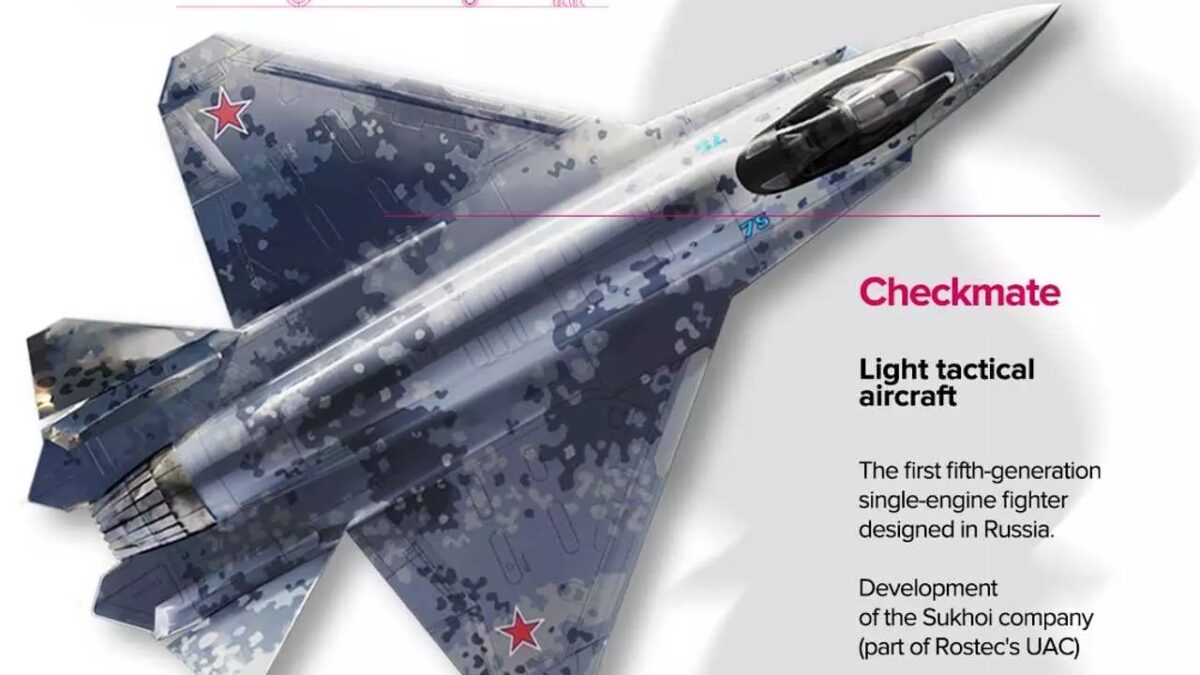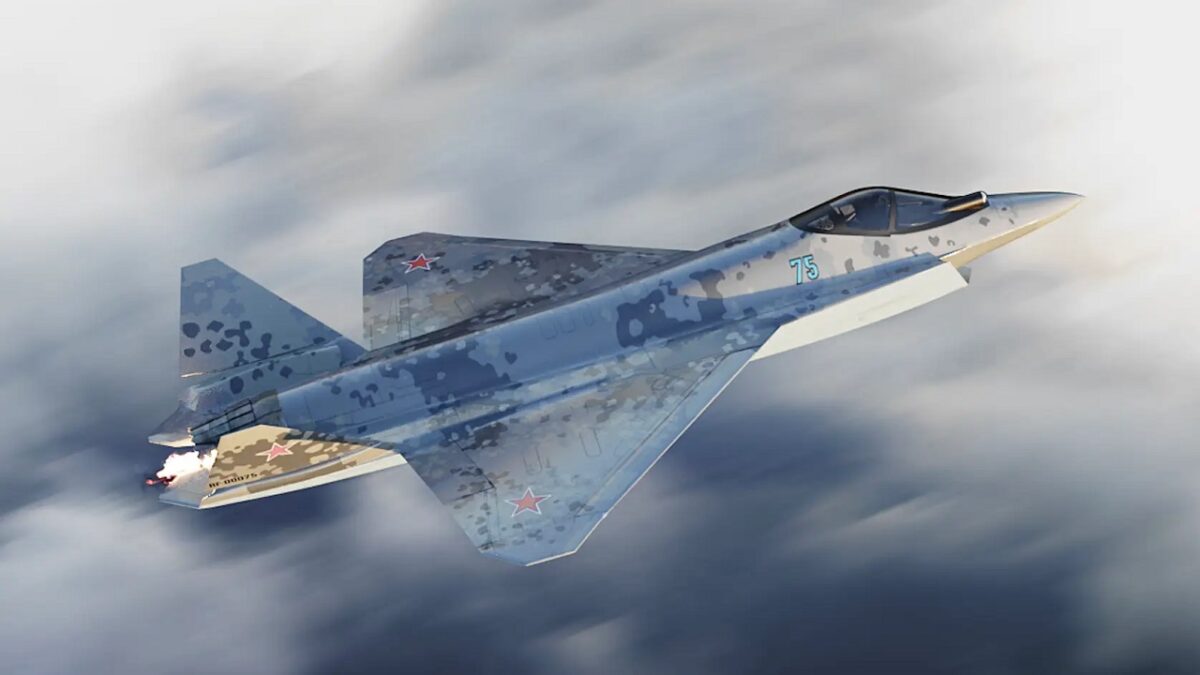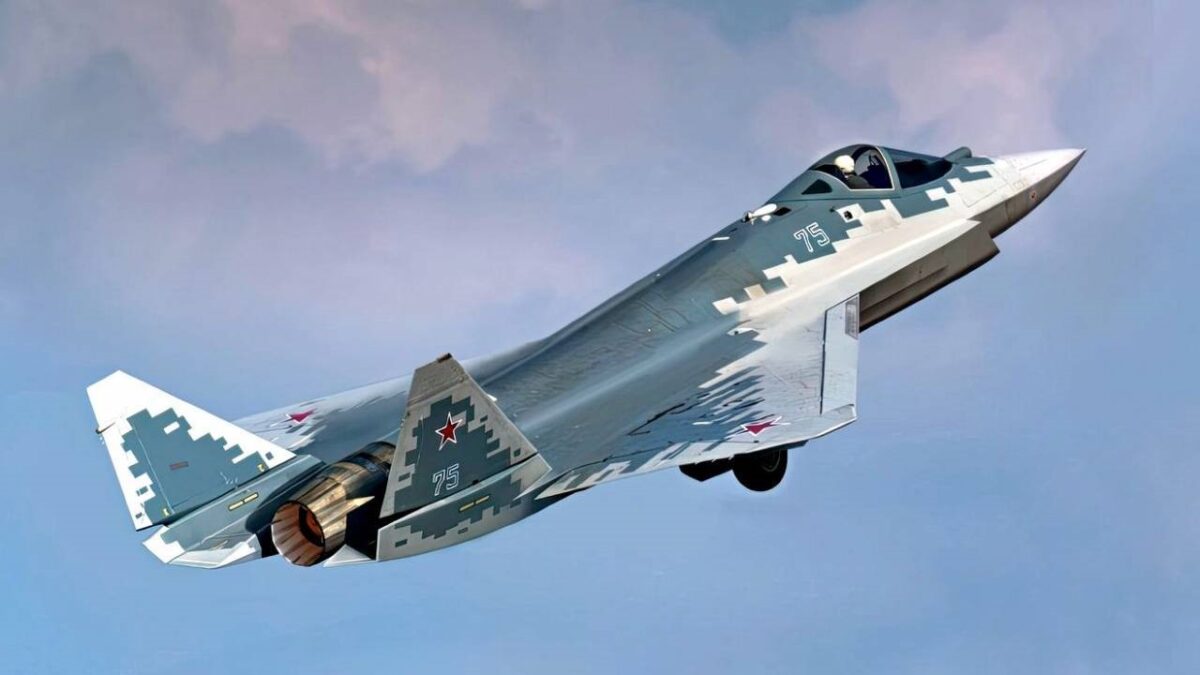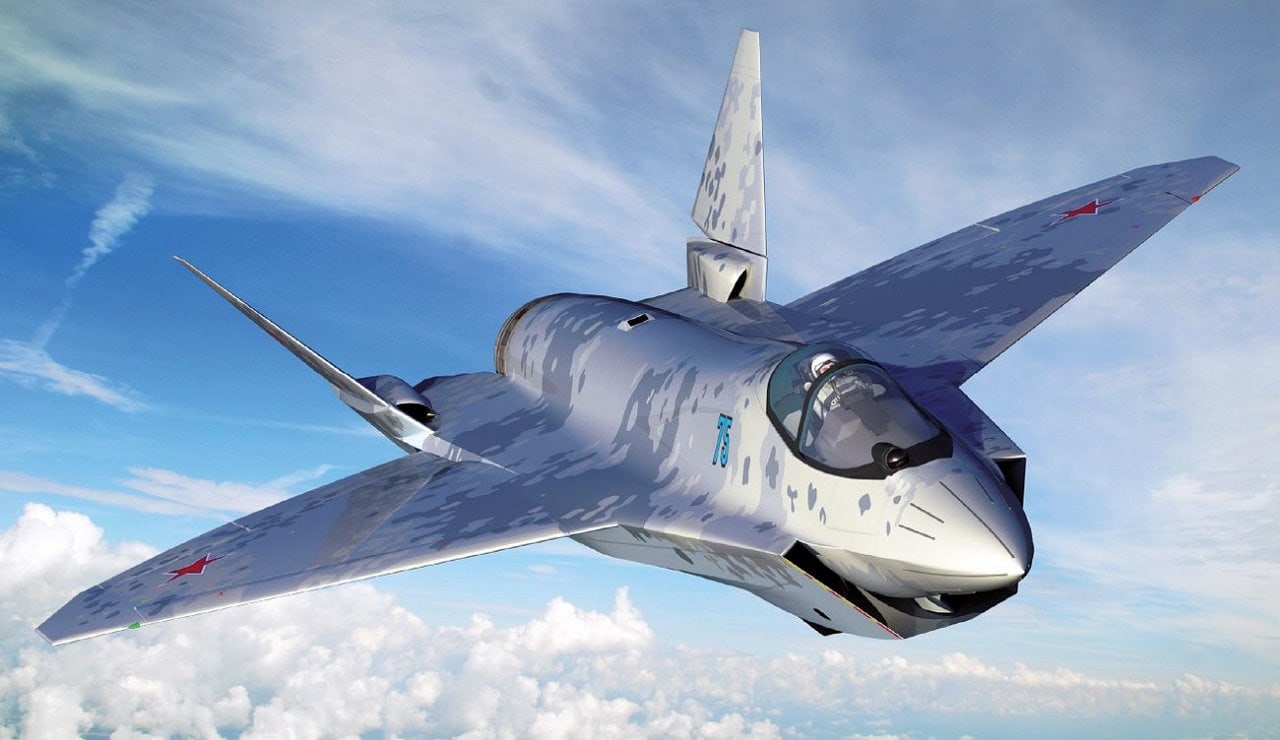Last summer, Russia announced that its highly-touted fifth-generation fighter, the Sukhoi Su-75 “Checkmate,” wouldn’t have its inaugural flight until at least some time in 2024 – a delay of more than a year. The updated timeline was confirmed by Russia’s Minister of Industry and Commerce.
“Changes were made to the design, which corrected the time of the first flight. But at the same time, the principle of modularity and modern digital technologies made it possible to make these changes in the shortest possible time, and as early as 2024 we plan to start flight tests,” said Manturov.
Fast forward and today the Su-75 remains little more than vaporware and like some now infamous consumer offerings – from the Segway Centaur to the Apple iTV – it looks increasingly like the vapor will disperse, never to be seen again.
Su-75: What We Know
The Su-75 was first announced by the Russian state-owned conglomerate Rostec at the MAKS 2021 Airshow in Moscow. It was actually the second fifth-generation fighter aircraft to be developed by Russia, following the Sukhoi Su-57.
Even as the Kremlin has struggled to reach serial production of its Su-57 (NATO reporting name “Felon”), the Su-75 was seen to have some advantages – namely that it could build on what Russia had already accomplished. In reality, if producing one advanced aircraft was proving difficult enough, trying to produce two was never going to make the process easier.
However, the Su-75 was always meant to be an export aircraft and the strategy may have been to find a way of filling the coffers via foreign sales to fund the production of the aircraft that will eventually serve with the Russian Aerospace Forces.
“During the time that has elapsed since the presentation of the project at MAKS 2021, we have received feedback from potential customers,” Minister Manturov explained. “Work was also carried out to optimize the cost and analyze individual technical solutions, which made it possible to significantly increase competitiveness, commercial attractiveness and reduce the technical risks in creating a domestic single-engine engine.”
Interest from foreign customers does appear to be the only chance the Su-75 has at this point – it is to find a buyer or else its “checkmate” for the Checkmate. And there is still very much a chance.
Middle East Customers?
As the Arab Gulf States Institute in Washington (AGSIW) noted in a report earlier in the year on the increasing ties between Russia and Iran, some of the Gulf States – notably Saudi Arabia and the United Arab Emirates (UAE) – have invested heavily to upgrade their respective militaries over recent years, often using a diversified arms purchasing strategy that includes Russia. As the UAE was unable to purchase the Lockheed Martin F-35 Lightning II, despite essentially “closing the deal” with the Trump Administration, the Emirates could appear to be willing to invest in the Su-75 instead.
Though the AGSIW report didn’t address the fact, given those close ties between Moscow and Tehran – and the burgeoning aerospace efforts underway in the Islamic Republic – it shouldn’t be ruled out that Iran could be an interested party for the Checkmate, especially as Israel, its arch-nemesis in the region, operates the F-35I “Adir.”

Su-75 mockup image. Image Credit: Creative Commons.

Su-75 Checkmate. Image Credit: TASS.

Su-75 artist rendition.
Tehran could see the Su-75 as the best possible gambit available.
Of course, all that still requires that Russia, even with outside investment, can actually get the Checkmate in the air. The absolute earliest the aircraft will reach serial production is 2027, and that’s under the most optimistic of conditions. More likely, it won’t be until the 2030s – by which time sixth-generation aircraft from the United States, Europe, and Japan could enter service.
A bargain-basement fifth-generation fighter, if it can even fairly be described as such, will hardly be making the moves to dominate the skies. Check and mate!
MORE: The F-35 Now Comes in Beast Mode
MORE: Why the U.S. Navy Tried to Sink Their Own Aircraft Carrier
Author Experience and Expertise: A Senior Editor for 19FortyFive, Peter Suciu is a Michigan-based writer. He has contributed to more than four dozen magazines, newspapers, and websites with over 3,200 published pieces over a twenty-year career in journalism. He regularly writes about military hardware, firearms history, cybersecurity, politics, and international affairs. Peter is also a Contributing Writer for Forbes and Clearance Jobs. You can follow him on Twitter: @PeterSuciu.

